

What makes a staging realistic?
Many people think of a realistic staging mainly in terms of appearance. If it looks real, then it must be realistic—right? That’s partly true. But realism goes beyond just the visual.
A staging only becomes truly realistic when participants believe that what they are experiencing is actually happening. Only then do we see the same reactions that occur in real-life situations: tension, adrenaline, endorphins, stress, time pressure. That’s when training feels “just like the real thing.” And it’s exactly at that point that we prepare our responders in the most effective way possible for the reality they’ll face.
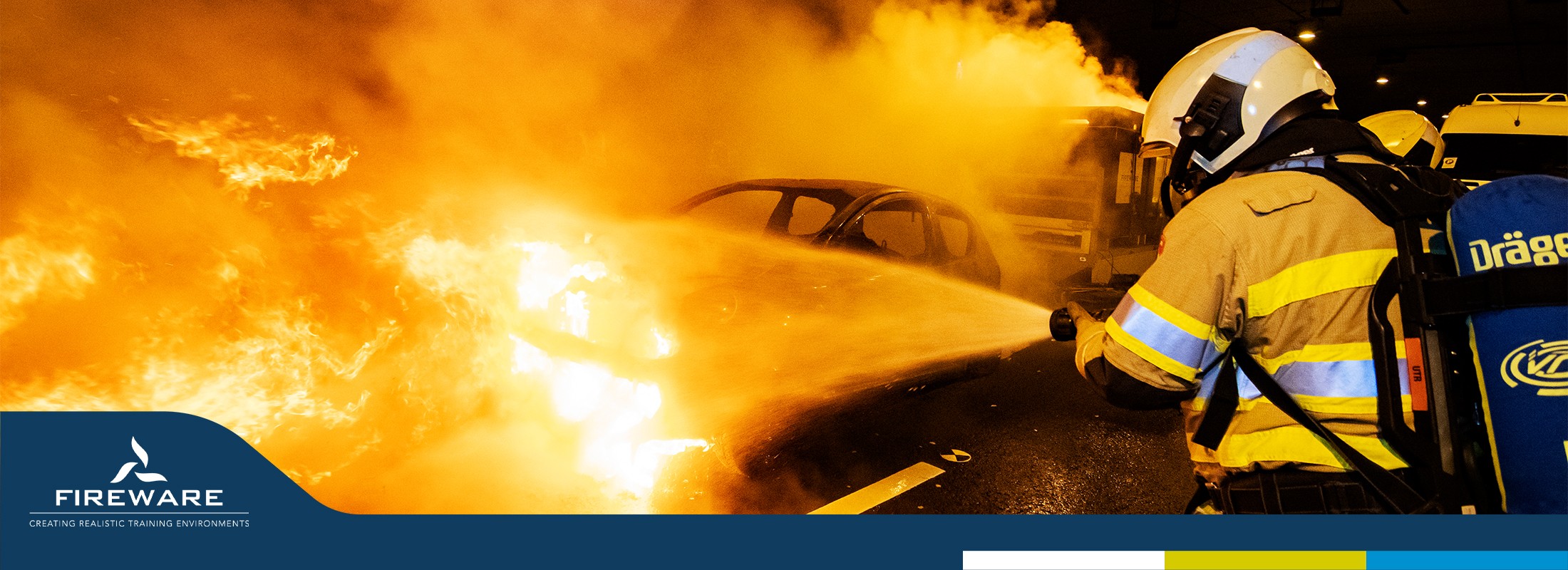

How Do You Make Something Feel "Just Like the Real Thing"?
To achieve that, we need to understand how the brain works. Not a lengthy psychological explanation—just one simple principle: the more puzzle pieces fall into place, the easier it is to forget that it’s “just a training.” That’s when engagement arises—sometimes even a sense of fanaticism. The scenario starts to feel real to the participants.
Does that mean everything has to be perfect? Not at all. As long as the right pieces are there, a few rough edges are fine. Our brains naturally filter them out. Once we believe something is real, we tend to overlook the details that don’t quite fit. Think of a movie: you know it’s not real, yet you still get drawn in. You empathize, you feel. Why? Because the right puzzle pieces are in place—strong acting, a convincing set, believable effects.
The environment matters too. In a dark cinema, you forget your surroundings. The sound is loud and immersive. But the moment the person next to you starts rustling a bag of chips, you snap out of it. That’s a reality check: you're in a theater, and what felt real a moment ago turns out to be fiction.
Training is no different. If you want participants to become fully immersed in the story your scenario tells, the puzzle pieces need to fit—and there should be as few “chip bags” as possible to break the illusion.


The puzzle pieces: senses
Those puzzle pieces are formed by our senses: sight, sound, smell, touch, and taste. The more senses you trigger in a credible way, the more convincing the experience becomes.
It’s not just about how something looks—it also needs to sound right, smell as you’d expect, and feel like the real thing. Only then does the brain start to believe that what you're experiencing is real.
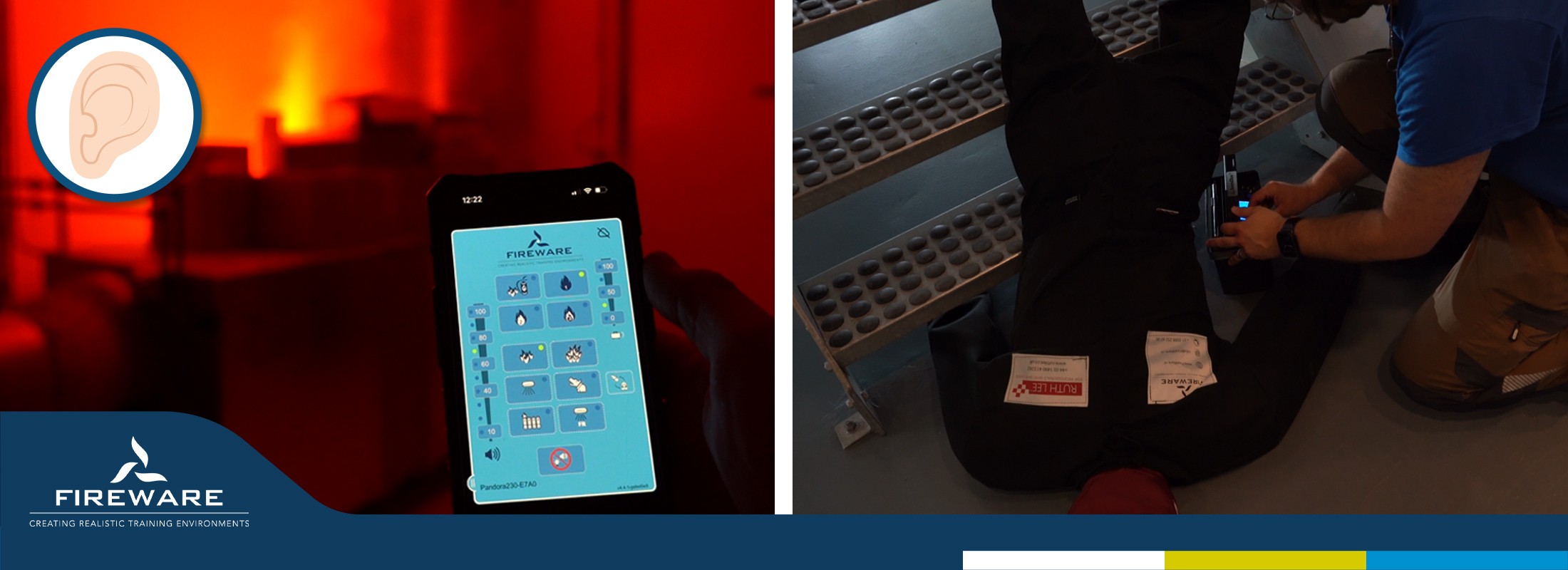

Ears - sound completes the experience
Silent films are a thing of the past. Sound is just as important as visuals.
So why do we still run emergency response exercises where we carefully set the visual scene, but forget about sound?
A fire is never silent. You hear it all: the roar of the flames, wooden beams cracking, glass shattering, people shouting… These sounds complete the picture.
And the good news? Adding sound is so easy!
The FireWare SoundBox, gives you a speaker full of realistic audio, ready to plug into your simulation. Using the FireWare Pandora's Box 230 for control? Then you can even mix multiple sounds to create an even richer experience.
And even if you don’t have these tools—no excuses. Get creative. Find other ways.
So from now on: no more simulations without sound. Deal?
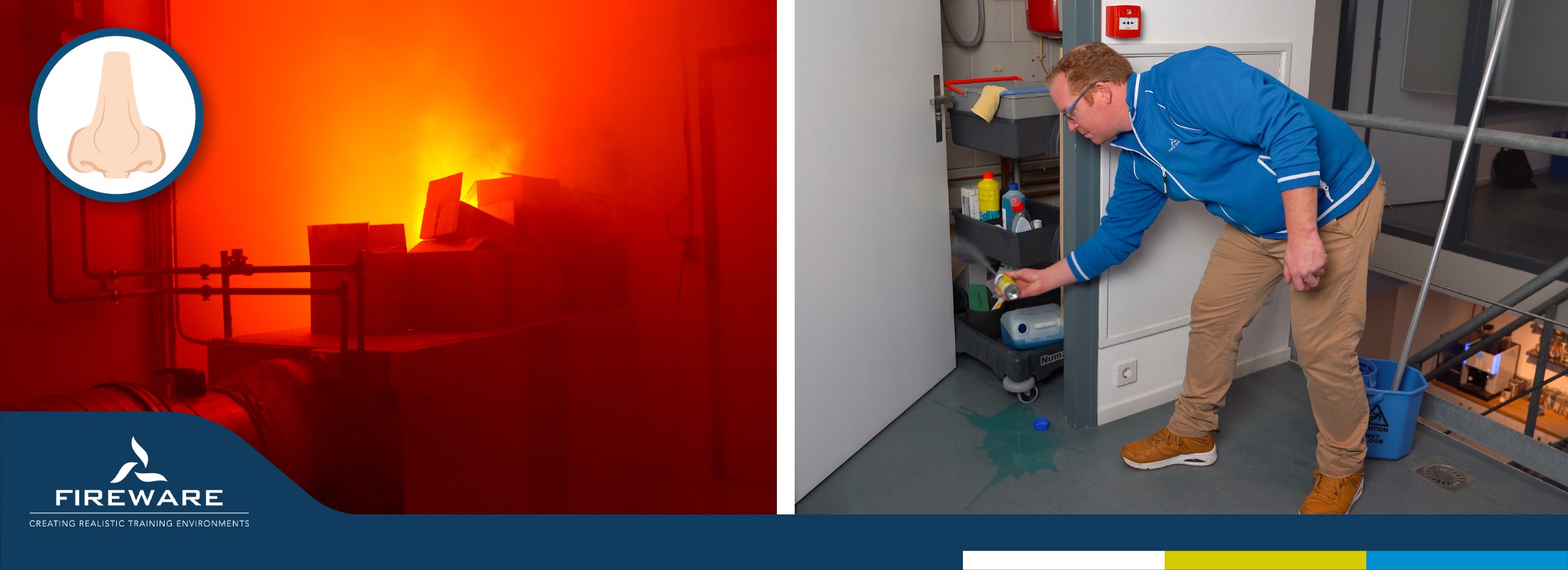

Nose – Scent as a Powerful Trigger
Another key puzzle piece is smell. Adding scent massively amplifies the experience.
Think of FireWare Burning Smell Spray or Burning Smell Extract for your smoke fluid: highly effective tools for making people believe there's a real fire. They’re essential for Workplace First Aid and Fire Safety and fire brigade exercises—even when breathing apparatus is in use. In fact, those moments without breathing masks are perfect for using scent to steer the scene.
And it’s not just for fire scenarios. Any emergency scene where a fire smell lingers benefits from adding scent.
And of course—hazardous materials incidents. Planning a training session for hazardous materials advisors? Then this element simply has to be spot-on. Realistic smells are crucial here.
But for most responders, perfection isn't needed. The brain is surprisingly forgiving when it comes to smell. As long as it smells “chemical,” the puzzle piece fits. That’s why we created FireWare Chemical Smell Spray—a simple yet powerful solution.
Participants will immediately sense it: “Something’s in the air…”
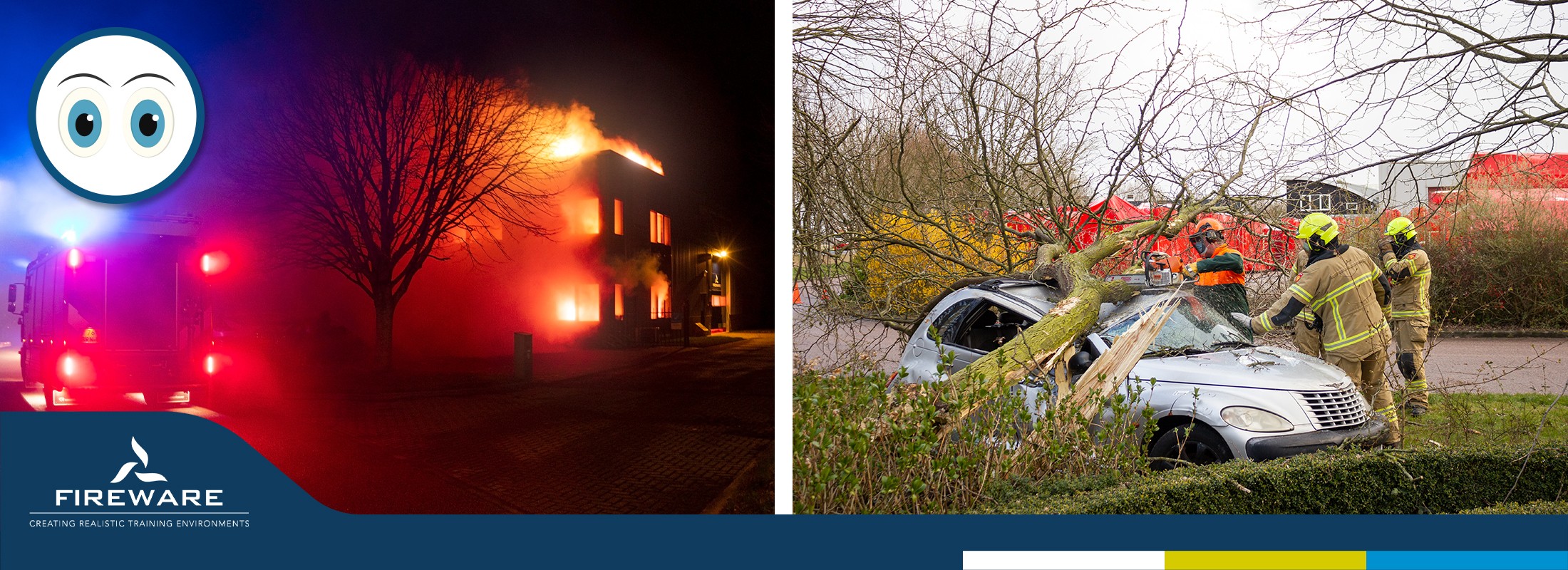

Eyes - the eye wants something too
Here they are: the eyes. Naturally, a critical sense.
Make sure what participants see matches what they’d expect in a real incident. Create fire sources that actually look like fire. Use wounds that convince. Design an environment that feels alive and real.
By using fire simulation products the right way—whether or not combined with real fire—you can create highly realistic scenes. The right training manikin adds a whole new layer of depth.
But don’t forget the “chip bags”—those distractions that break the illusion. Hide anything that doesn’t belong in the scene. Staging equipment? Out of sight. Grey boxes? Tuck them away. Cables? Neatly hidden. That training trailer or fire brigade van? Park it out of view.
Let participants arrive at an incident—not at a training.
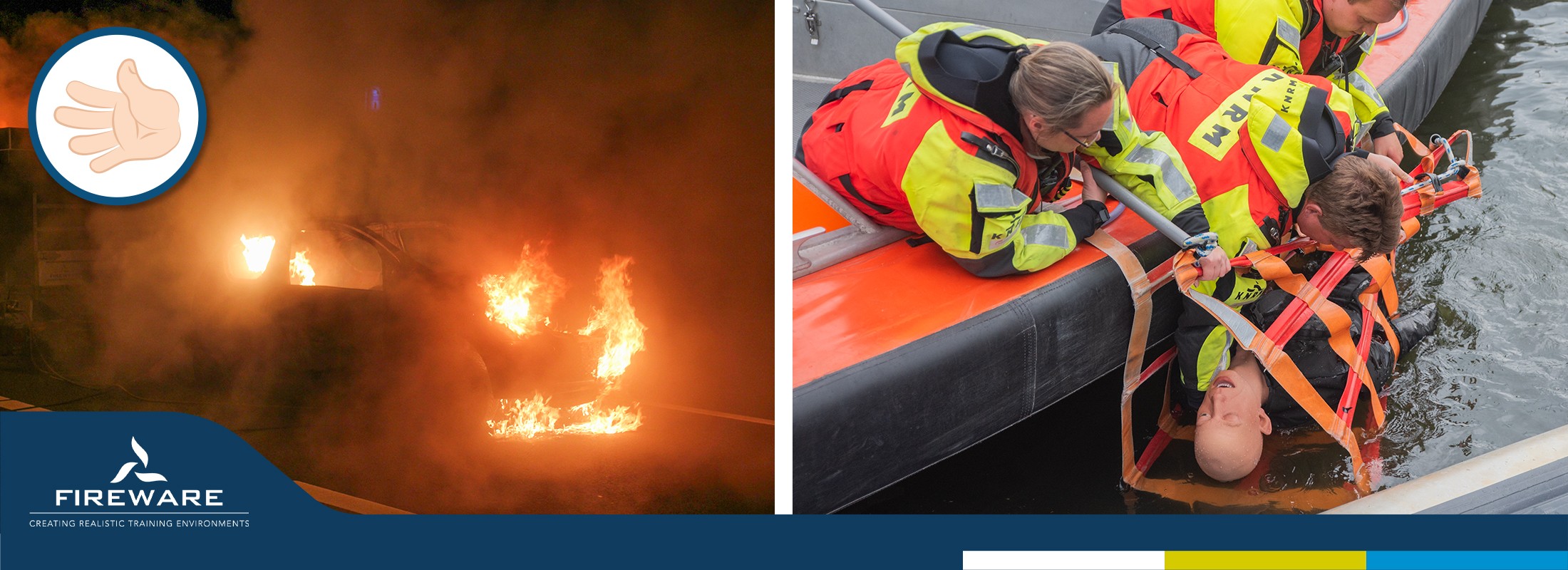

Skin – Feeling is more than just touching something
For a realistic training environment, we at FireWare have selected usable senses to complement Aristotle’s five senses:
- We have a sense of balance (equilibrioception)
- We can distinguish between hot and cold (thermoception)
- We are aware of our body (proprioception)
- We can feel pain (nociception)
It is important to be mindful of the sense of touch. Do you want to teach people a task, or do you want them to experience what it is like to perform that task in practice, when it really matters, when the pressure is high?
Take, for example, extinguishing a fire in a ship’s engine room. The most realistic approach is to put them in an engine room with high temperatures, smoke, difficulty breathing, limited movement in a confined space, and a swaying ship at sea.
In such an exercise, you focus on all forms of feeling: the sense of balance, the sensation of temperature, making people aware of their body in a confined space where you can’t touch everything freely and often cannot move without restriction. It’s a space where it’s easy to hurt yourself.
For someone experienced—someone who has worked at sea for years—it’s fantastic to be able to run such an exercise. But always make sure that the situation is under control, that it’s safe, and that the exercise can be repeated so trainees can have the same experience.
For someone with no experience, it can work well to let them slowly get used to what it’s like when a fire breaks out in an engine room. Sense by sense. When it comes to touch, use real fire. Let them feel what real fire’s temperature does and how their body reacts—but in a safe environment, where they don’t yet have to deal with the movement of the ship, and there’s no risk of bumping or getting stuck because of limited space.
Feeling is what gives training depth. That’s why we think it’s important to consider how to involve the sense of touch in every scenario—whether it’s feeling the weight of carrying a victim or experiencing how quickly a small space heats up when fire is involved. Always think about how to safely and meaningfully use the sense of touch in each scenario. We’re always happy to brainstorm with you!
And what about taste?
Taste and smell are two senses that are very closely connected. Taste may well be the most difficult sense to involve in training. But it’s good to go through all the senses when preparing a scenario, including taste.
Consider a resuscitation scenario. We often train the procedure on a smooth, expressionless face, without emotion. And that’s fine for learning the basics. But even here, you can add depth by engaging the senses. How does it feel if the person has a beard? How does it smell if the person first became unwell and then stopped breathing? What if you use “sour food residue” in the beard and on the lips? Always remember—it’s not about making the exercise as unpleasant as possible, but about making it as realistic as possible, matching the trainee’s level.
Curious about how to stimulate the senses in a training? Get in touch with us—we’d be happy to think along with you!
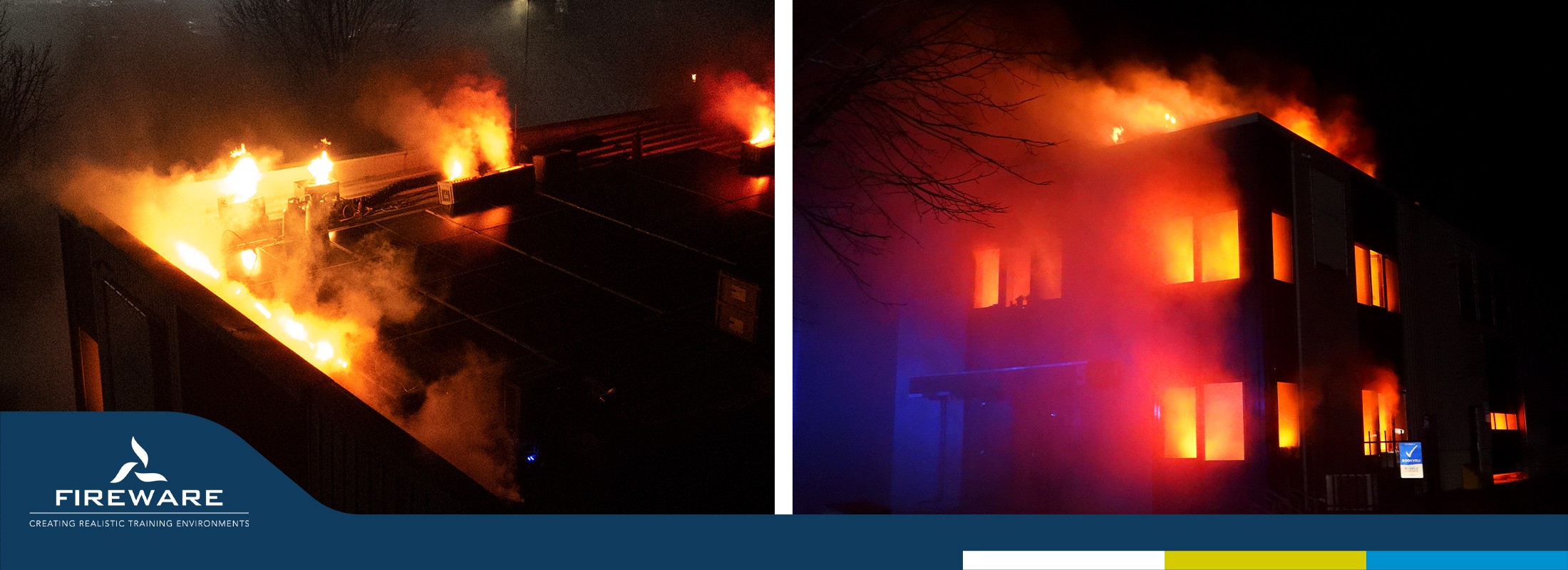

It's the details that make the difference
A realistic simulation is built with care and attention.
Keep watching, listening, smelling, feeling critically. Is this what you'd expect in a real emergency? Does the sound match the visuals? How will this come across to the participants? Is the message clear enough? Are there any unintended distractions?
Those who pay attention to all these details—and stimulate each sense as realistically as possible—will see that a training session stops feeling like a game and becomes what it should be: serious preparation for real-life work.
Visit our product page to explore all available simulation tools.Check out categories like smell or sound, for example. Need help? Feel free to get in touch—our team is happy to assist.
Want to Know More About Multi-Sensory Simulations?
● Check out FireWare's philosophy on realistic staging, including how to control and optimize sensory stimulation.
● Want to learn how to build truly realistic scenarios in practice? Then a FireWare staging training is the perfect opportunity. Check out the different staging training courses on our website or contact us to discuss the possibilities.
● And don’t forget to explore our Simulation Academy: – the go-to knowledge platform for emergency training leaders. There you’ll find how-to videos, our Safety Library and more.






